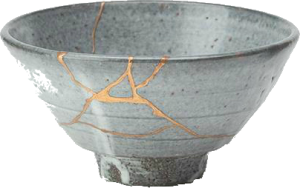What if ….
- You could say, ‘that was in the past’, and mean it?
- You could enjoy your present and look forward to the future again, knowing that the past is over?
I specialize in the treatment of trauma, helping people to put the past behind them and create a more joyful and peaceful life. In my practice, I use specific approaches and techniques that are effective in resolving trauma reactions. These methods involve re-interpreting what occurred at the level of body, mind and spirit in a way that helps you to move on with a hopeful future.
Why Is This So Hard to Get Over?
Research has shown that traumatic memories are processed differently than regular memories. Trauma memories are often highly intense, sensory-based memories. For example, the sights, smells, sounds, and body sensations are coded intensely, as well as the strong emotions, but they are not put into context in the brain and nervous system. During a traumatic event, the logical mind is not functioning effectively, since it is overwhelmed by the strong survival responses from the ‘primitive’ brain. As a result, deep imprints of a negative nature can be formed which are not integrated with the higher thoughts functions. In this way, false beliefs about yourself can be formed, since the ‘critical’ mind that evaluates information has been temporarily disabled. These effects are especially pronounced when children go through trauma, since the logical functions of their brains are not yet developed. In order for these traumatic memories and beliefs to be healed, you must re-examine what you experienced in a new way, which will allow these experiences to finally be resolved.
Telling A New Story
The process of healing from trauma is about telling a new story, or of telling your story in a new way. In order to do this, the jumbled-up trauma information needs to be re-processed. A good way to understand this is to picture an over-crowded cupboard full of dishes that have been hurriedly thrown in and the door shut. Those dishes represent all the memories and impressions from the trauma. In order to put those dishes in order, you must carefully open up the cupboard doors, remove the dishes one by one, put them in order, and then place them back in the cupboard in an orderly way. This is what the process of trauma therapy consists of.
But I have already talked about this before, and it hasn’t helped
It’s true that just talking about the trauma may not be enough to activate healing. It’s the way that you are able to process the trauma that is important. For instance, many people who have been through a trauma talk about “What if’s… What if I had done that… Shouldn’t I have known…” What has been shown to be helpful is to examine what occurred in a way that identifies the events that actually occurred, the thoughts and emotions that accompanied the events, the interpretations and beliefs that emerged from the events, and sensory information that is encoded with the trauma. This allows you to identify the triggers that are still elicited the trauma in the present, and what specific responses will be targeted for transformation.
It’s too hard. I just can’t face it again
Many people who have survived trauma feel this way. As a result, they try to avoid thinking about any reminders of the trauma in an effort to manage their distress. The difficulty in that is that suppressing thoughts and feelings does not work in the long-term. In fact, it is this response that is actually keeping the trauma response in place.
I would encourage you to practice a new way of thinking about these trauma reminders – as an invitation from your body-mind to help you to heal. These trauma reactions – memories, feelings, sensory reactions – that you see as intrusions are actually an attempt by your body-mind to heal. What is needed from your present self is to answer this call, and to be willing to take the courageous steps toward resolution of this for once and all. The truth is that these responses, as excruciating and overwhelming as they may seem, are actually not dangerous to you. And you have the strength and resilience to embody that healing that you crave.
Many people who have successfully healed the effects of trauma have discovered that they now have an enhanced joy and appreciation in living. I believe that the painful experiences of our lives, once transformed, can actually bring gifts and wisdom to our lives as well.
A Healing Philosophy
This reminds me of a healing story, about the ancient Japanese practice of kintsukuroi. In this form of art, when a piece of pottery is broken, a rather amazing process is employed in the act of repairing the vessel. Instead of simply fixing the break, the craftsman emellishes the broken places with veins of silver and gold. Through the art of kintsukuroi, this piece is now even more beautiful than before it was broken. The resilience of its journey, from rupture to repair, is emphasized and celebrated.
This is a perfect metaphor for how to view your precious self after having experienced trauma. You are not broken, not flawed – but instead even more valuable from the healing of those experiences. At the level of spirit, who you are can never be harmed or damaged. You are whole and complete. And the process of your healing will soon fill in those seams of pain with silver and gold.

